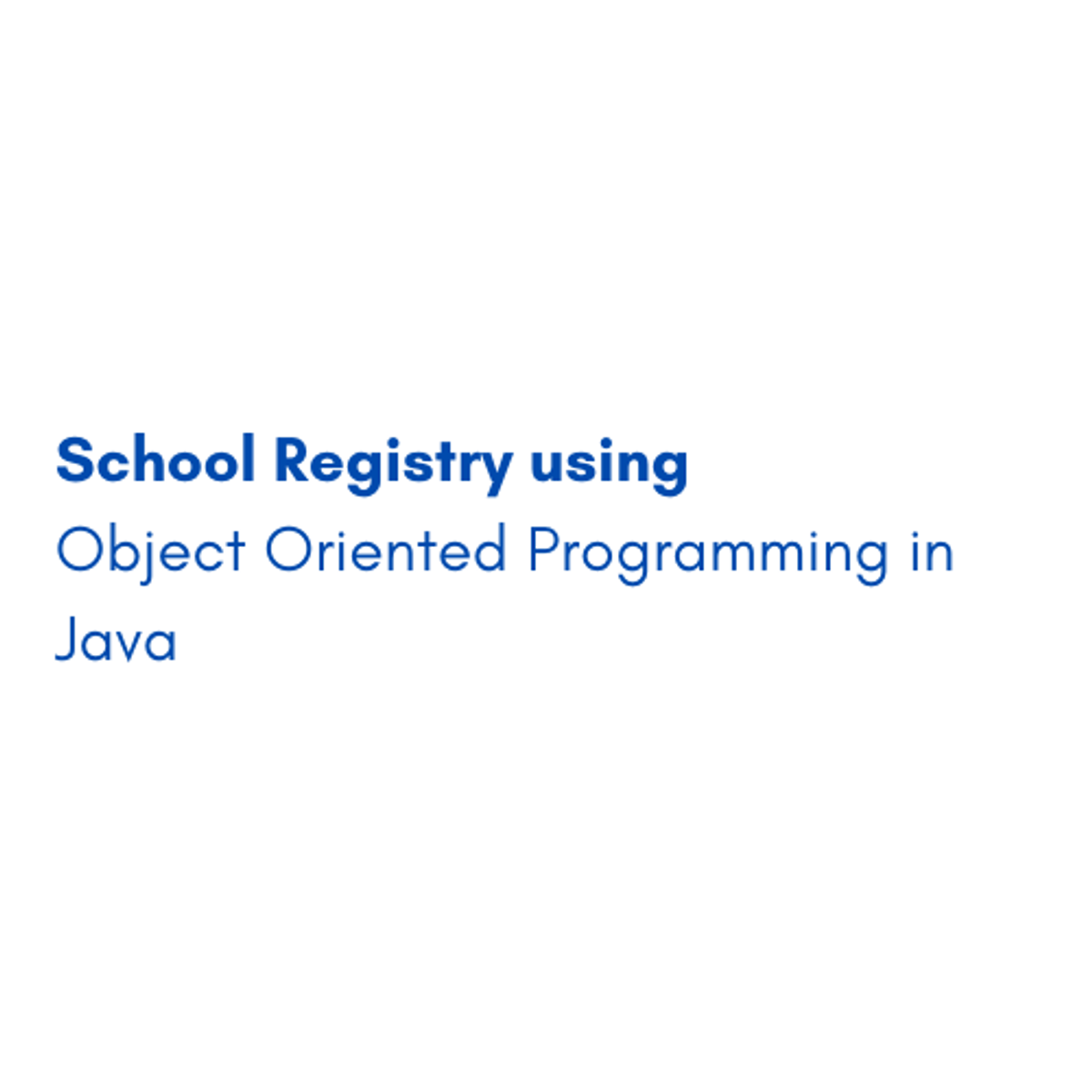Back to Courses









Computer Science Courses - Page 136
Showing results 1351-1360 of 2309

Java Database Connectivity (JDBC) Introduction
The intent of Java Database Connectivity (JDBC) Introduction is to get some hands-on experience with foundational JDBC concepts. On our journey we’ll learn about why and how the API makes working with databases easy for Java Developers. After this course you should not only be able to demonstrate the mechanics of JDBC but furthermore, you should be able to explain the design and intent.

Performance Testing with JMeter for absolute beginners
JMeter is one of the most widely used performance testing and load testing tools in this industry. In this 2-hour long project-based course, you will learn 1. Basics of performance testing
2. JMeter components like samplers, config elements, listeners etc
3. Sending HTTP requests using JMeter
4. Defining config elements
5. Sending HTTP POST/PUT/PATCH and DELETE requests in Jmeter
6. Reading from CSV file using CSV config element
7. Applying load
8. Installing custom plugins
9. Generating load or traffic with custom thread groups10. Custom graph listeners in JMeter

Hide and Reveal Secret Rooms in Unity
In this one-hour, project-based course, you'll learn how to hide and reveal secret rooms in your game by setting up scenes, writing C# scripts and configuring GameObjects. Adding secrets to your game makes players want to explore the game-world more. When found, secret rooms are a reward unto themselves ... but throw in a treasure chest, too, hmm?
This project covers loading and unloading scenes, setting trigger objects and writing C# code to enable and disable game components.
The guided project will introduce you to the following Unity concepts:
- Scenes
- Materials and Prefabs
- Colliders and Triggers
- UI Toolkit
- Animation
- Coding techniques for Scene-Management and Trigger Events
This project makes use of the concepts discussed in Create Keyboard Movement Mechanics with C# in Unity and Create Power-Ups and Obstacles with C# in Unity. These compliment this guided project and, although not prerequisites, are recommended for a more well-rounded understanding of the concepts presented herein.

School Registry using Object Oriented Programming in Java
In this 1-hour long project-based course, you will learn how to create a graphical user interface for a school registry using Java Window Builder. You will be able to identify and apply the four principles of object-oriented programming, which are encapsulation, inheritance, polymorphism and abstraction, to almost any programming language. Throughout the project, you will be able to identify encapsulation and how to use it, comprehend and apply inheritance, use the different forms of polymorphism and finally, apply and use abstraction, in order to create our GUI. By learning Object Oriented Programming, you will be able to create your own Java projects using Eclipse, customized to fit your needs.
Note: This course works best for learners who are based in the North America region. We’re currently working on providing the same experience in other regions.

Introduction to Embedded Machine Learning
Machine learning (ML) allows us to teach computers to make predictions and decisions based on data and learn from experiences. In recent years, incredible optimizations have been made to machine learning algorithms, software frameworks, and embedded hardware. Thanks to this, running deep neural networks and other complex machine learning algorithms is possible on low-power devices like microcontrollers.
This course will give you a broad overview of how machine learning works, how to train neural networks, and how to deploy those networks to microcontrollers, which is known as embedded machine learning or TinyML. You do not need any prior machine learning knowledge to take this course. Familiarity with Arduino and microcontrollers is advised to understand some topics as well as to tackle the projects. Some math (reading plots, arithmetic, algebra) is also required for quizzes and projects.
We will cover the concepts and vocabulary necessary to understand the fundamentals of machine learning as well as provide demonstrations and projects to give you hands-on experience.

E-Commerce Payments Using Stripe and NodeJS
In this 1-hour long project-based course, you will learn how to create a website which takes online payments using Stripe. You will use NodeJS to create the back-end of the website, and HTML, CSS and JavaScript for the front-end. You will customise the website and add buttons to allow users to toggle quantity. Throughout the course you will use VS Code, and will learn important ways to think about taking online payments (such as security, testing and design).
This course is for anyone with basic HTML, CSS and JavaScript skills.

Building Scalable Java Microservices with Spring Boot and Spring Cloud
"¨Microservices"" describes a software design pattern in which an application is a collection of loosely coupled services. These services are fine-grained, and can be individually maintained and scaled. The microservices architecture is ideal for the public cloud, with its focus on elastic scaling with on-demand resources. In this course, you will learn how to build Java applications using Spring Boot and Spring Cloud on Google Cloud.
You'll use Spring Cloud Config to manage your application's configuration. You'll send and receive messages with Pub/Sub and Spring Integration. You'll also use Cloud SQL as a managed relational database for your Java applications, and learn how to migrate to Cloud Spanner, which is Google Cloud's globally-distributed strongly consistent database service. You'll also learn about tracing and debugging your Spring applications with Google Cloud's operations suite.
To succeed in this course, you should be familiar with the Java programming language and building Java applications with tools such as Maven or Gradle. You should also have general knowledge of Google Cloud."
>>> By enrolling in this course you agree to the Qwiklabs Terms of Service as set out in the FAQ and located at: https://qwiklabs.com/terms_of_service <<<

Creating Toolpaths for a CNC Lathe
CNC machines come in an almost endless array of configurations for various applications. So far, we have only talked about CNC Mills. More specifically vertical milling centers. In this course we turn our attention to the CNC Lathe. We identify the difference in a lathe’s coordinate system, tools, and how to create lathe specific toolpaths.
Want to take your learning to the next level? Complete the Autodesk CAD/CAM for Manufacturing Specialization, and you’ll unlock an additional Autodesk Credential as further recognition of your success! The Autodesk Credential comes with a digital badge and certificate, which you can add to your resume and share on social media platforms like LinkedIn, Facebook, and Twitter. Sharing your Autodesk Credential can signal to hiring managers that you’ve got the right skills for the job and you’re up on the latest industry trends like generative design.
Enroll in the Specialization here: https://www.coursera.org/specializations/autodesk-cad-cam-manufacturing
Looking for Autodesk Fusion 360 certification prep courses? Check out additional learning resources to help you uplevel your skills: https://www.autodesk.com/learning

Ordered Data Structures
In this course, you will learn new data structures for efficiently storing and retrieving data that is structured in an ordered sequence. Such data includes an alphabetical list of names, a family tree, a calendar of events or an inventory organized by part numbers. The specific data structures covered by this course include arrays, linked lists, queues, stacks, trees, binary trees, AVL trees, B-trees and heaps. This course also shows, through algorithm complexity analysis, how these structures enable the fastest algorithms to search and sort data.
Design Principles: an Introduction
What makes an interface intuitive? How can I tell whether one design works better than another? This course will teach you fundamental principles of design and how to effectively evaluate your work with users. You'll learn fundamental principles of visual design so that you can effectively organize and present information with your interfaces. You'll learn principles of perception and cognition that inform effective interaction design. And you'll learn how to perform and analyze controlled experiments online. In many cases, we'll use Web design as the anchoring domain. A lot of the examples will come from the Web, and we'll talk just a bit about Web technologies in particular. When we do so, it will be to support the main goal of this course, which is helping you build human-centered design skills, so that you have the principles and methods to create excellent interfaces with any technology.
